Schleich isn’t exactly wanting for criticism on this board. Plenty of paleo fans and collectors – myself included – tend to be underwhelmed or outright repulsed by the variety of ugly-looking toys Schleich produces in the name of educational purposes. Not all Schleich products are bad, though, and at least a few of their prehistoric line figures have managed to surprise collectors – even if was almost by accident. One such surprise came in 2019 with the release of Schleich’s latest version of Giganotosaurus – one of two new releases featuring the genus, in fact.
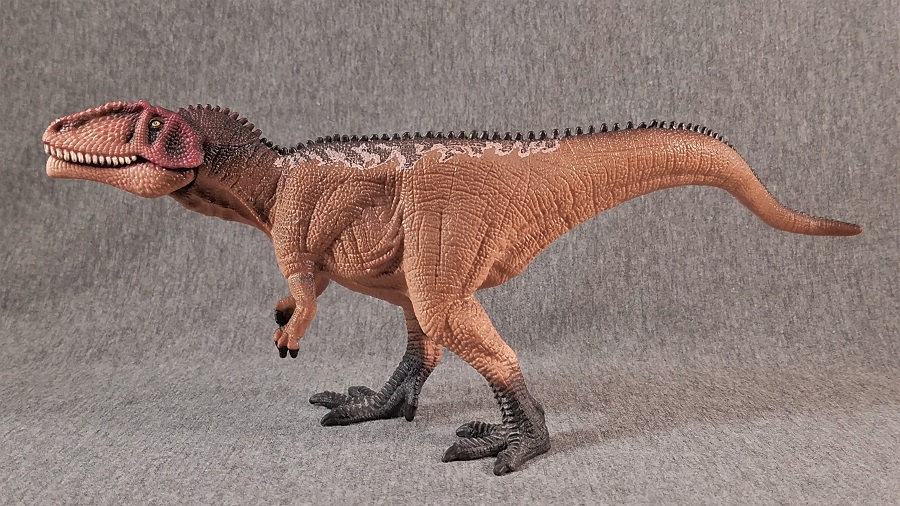
The T. rex-sized South American theropod has been a mainstay in Schleich’s catalog for a decade now. For their 2019 slate, Schleich released a repaint of the 2015 standard-sized model from the World of History series; they also released a new, somewhat smaller figure meant to represent a juvenile specimen, listed under the moniker “Age of the Dinos”. Over the past few years Schleich has taken to releasing unique sculpts of pre-existing genera in their catalog to represent smaller juveniles, with interesting results. As someone who has long been enamored with Giganotosaurus and its carcharodontosaur relatives, I must admit that I lost excitement for Schleich’s choice offerings of this genus a long time ago; but, as mentioned before, Schleich can deliver a surprise sometimes.
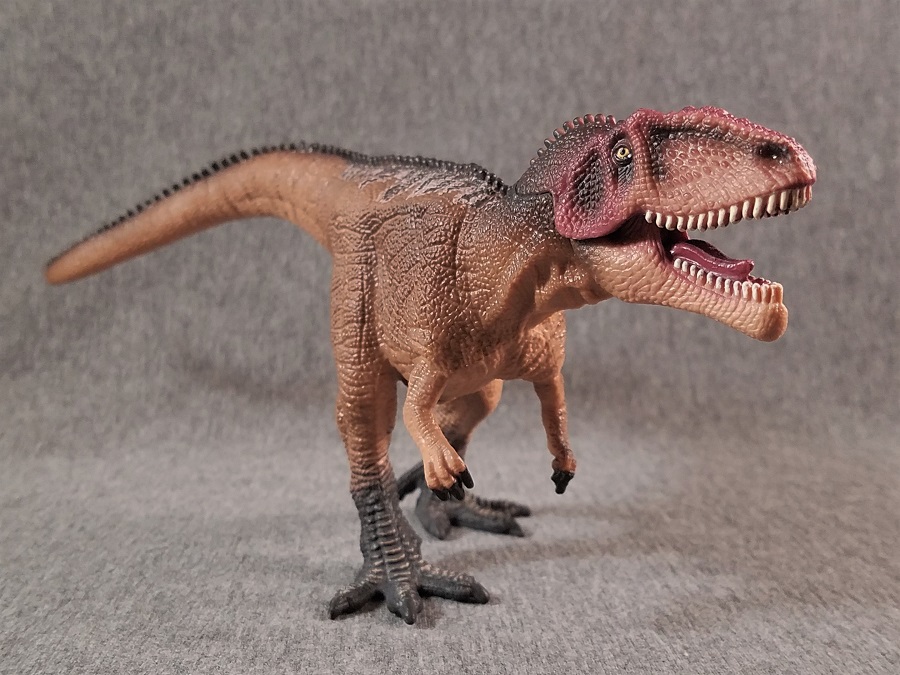
The juvenile Giganotosaurus, measuring about 27 cm (10.5 in) long, would sit about in the 1:45-1:48 scale as an adult; indeed, while no juvenile specimens of Giganotosaurus or other carcharodontosaurs are definitively known yet, this toy actually matches the fossils we do have of Giganotosaurus better than most (or all) of Schleich’s “adult” toy versions. The skull is much more defined than other Schleich Giga models, retaining the long snout, narrow bridge, and signature squared-off jaw seen in Giganotosaurus reconstructions. It should be noted that the model still technically isn’t correct: the skull is more in line with older reconstructions of the fossil material, which overestimated certain dimensions of the postorbital and antorbital fenestrae. However, the figure is at least fully recognizable as a Giganotosaurus, which is more than can be said for some of its predecessors.

Elsewhere on the figure, proportions vary in quality. Generally speaking, the figure’s body parts line up with each other pretty well, at least from cursory looks at different skeletal illustrations and mounts for reference. The neck is slightly shorter than the skull, with a modest s-curve. The backbone features a small arch at the shoulders, and plateaus all the way to the tail. The arms are expectedly short, but not quite tyrannosaur or abelisaur levels of tiny (the individual fingers are nondescript in detail, though). The tail length might be a little generous, but honestly I kind of prefer to see toy manufacturers to give their dinosaurs more tail length than less (these are archosaurs, not mammals, after all).

One other unusual feature is the hip bone, which is noticeably deeper than usually depicted for this genus, giving the figure a much stouter appearance in profile. This is, again, a surprising departure from many theropod toys which tend to underplay this anatomical trait. As a result of this choice, however, the legs have also been extended in proportion – particularly the femur, which is now nearly as long as the lower leg and ankle combined. The overall effect is an animal with a taller gait than would be normally expected of Giganotosaurus – although, since we don’t have any juvenile specimens yet, it’s impossible to say that the animal wouldn’t appear this way during this stage of life. Certainly evidence of similar body type changes are known from the later tyrannosaur family, so there is arguably a precedent among theropods. The feet are substantially enlarged as well, as is commonly seen for stability purposes; thankfully the figure is indeed quite stable on its two feet, and I don’t typically find their size distracting in this case.
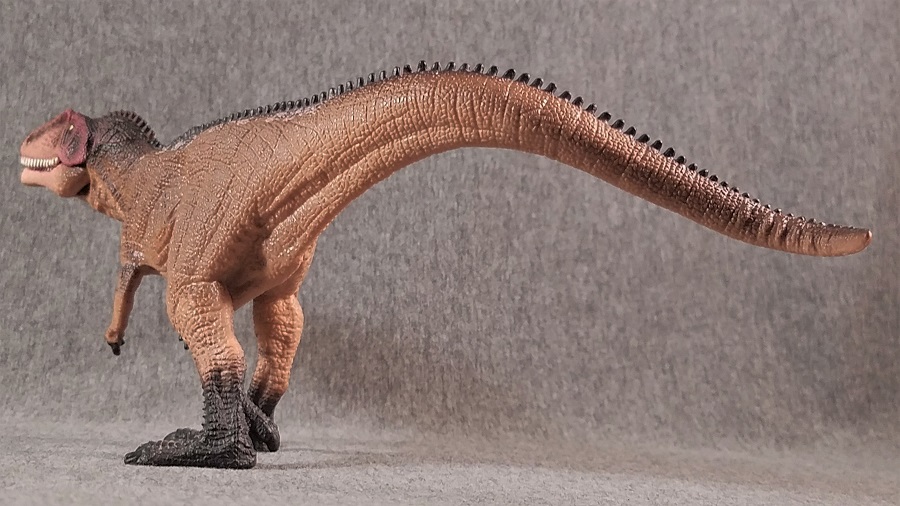
One of Schleich’s stronger points in design is arguably their finer detail sculpting, and that is consistent with the juvenile Giganotosaurus as well, with some drawbacks. The figure is made of the same durable plastic quality as most Schleich figures, for ease of handling. The body is mostly covered in medium-sized, semi-uniform scales crisscrossed with striated creases along the skin; finer scales are present on the throat and stomach, with patterns of larger oblong scales arrayed across the face. The lacrimal ridges along the top of the skull are given a nice rugose texture; and a line of short spikes runs down the length of the back and tail, as is often popularly depicted for this genus. These spikes are fairly uniform and blunt in shape, as are the teeth and claws on the figure – expected sacrifices for the sake of child-safe design. Wrinkled texture on the throat and flanks, as well as creases on the inside curve of the tail, add the most naturalism to the overall sculpt. Some of these finer details, however, also betray the common ailment of shrinkwrapping in the figure. Although the skull is faithful to (older) reconstructions, the contours of the skull shape are much too pronounced. Despite the deeply-set pubic bone, the lateral view of the figure is quite narrow, with very little muscle mass evident in the ribcage or chest regions. I suspect this juvenile is having a hard time at life on its own, judging by how gaunt it currently is.
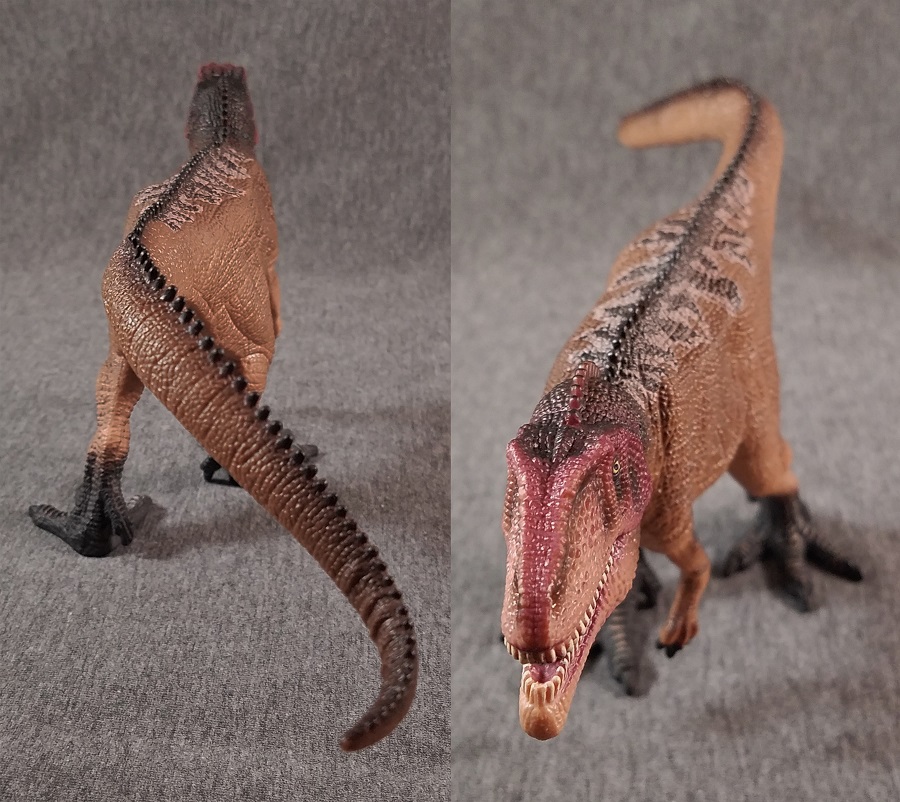
Schleich’s color palette of choice for their 2019 Gigas is a range of muted, “earthy” tones; muddy brown flanks transition to an almost fleshy pink on the undersides and over the face. The feet and nape are almost solid black, with burgundy highlights to the skull and crests. Hints of burgundy or pink are also evident on the neck spikes and the foot scales, and a similar shade of red is applied solidly to the inside of the mouth. A leafed pattern of black and pink spreads across the figure’s back; the application appears a bit sloppy, but the irregular patterns have a nice effect, and it’s a fairly unique-looking style. The eyes are neatly painted yellow and pop nicely from the shades of reddish-brown and black surrounding them on the face.
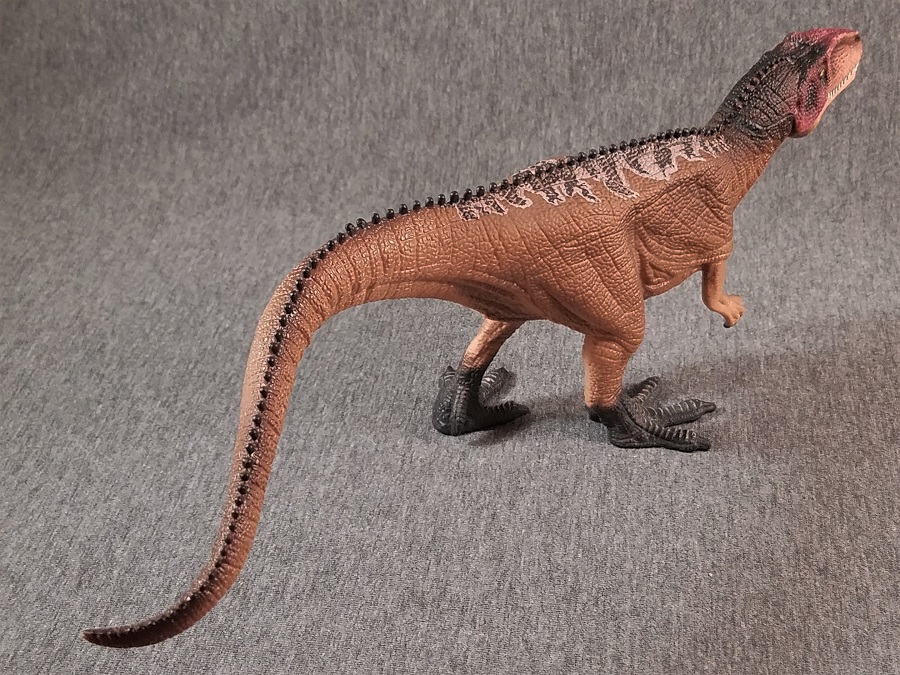
Although it’s hard to compete with the likes of Safari ltd and Eofauna when it comes to true quality and accuracy, Schleich has, with all things considered, produced a pretty good Giganotosaurus in a smaller model scale. Without a doubt this figure is leagues better than the company’s other iterations of the genus, which are collectively some of the worst depictions of Giganotosaurus we’ve ever had. If you’re looking for a Schleich toy dinosaur that you can give your kid AND display in your collection without embarrassment, the Juvenile Giganotosaurus is a respectable choice. Like most current Schleich products, this toy should be easily obtainable through most standard retailers, and for a more reasonable price than its larger (and uglier) counterparts.
Disclaimer: links to Ebay and Amazon on the DinoToyBlog are affiliate links, so we make a small commission if you use them. Thanks for supporting us!



Magnificent criticism especially regarding the scientific aspect. It is good to read articles like this.